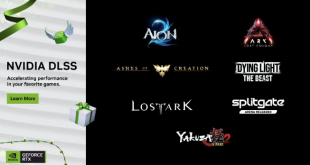After a tumultuous week for AMD's latest GPU, today we have been able to present our review of the Sapphire RX 5600 XT Pulse. With a last-minute BIOS update which changed key specifications including power target, GPU speed and memory speed, the positioning of this card has shifted somewhat and created a fair amount of confusion.
If we start this conclusion with a look at how the card would have been positioned before it received the updated BIOS, there's no doubt it was already significantly faster than Nvidia's GTX 16-series competitors with a 9% (average) performance lead over the 1660 Ti that increases to 14% when compared to 1660 Super. That said, Nvidia did well to shift the goalposts and drop the price of the RTX 2060 to $299/279. Up against the 2060, the 5600 XT with its original BIOS proved 6% slower on average, but up to 15% slower in certain games.
In my opinion, if AMD hadn't issued the new BIOS, the 5600 XT would've been stuck in a bit of a no-man's land – faster than the 1660 Super, but also significantly more expensive (14% faster but 21% pricier, in terms of MSRPs), while RTX 2060 price drops mean that card is now just 7% more expensive, or even the same price if you snagged an EVGA RTX 2060 KO for $279 during pre-orders.
There's no doubt in my mind that AMD had also realised this, which is why the 5600 XT received such a last-minute BIOS update. In this case of this Sapphire card at least, total board power (TBP) was raised from 150W to 160W, boost clock improved from 1620MHz to 1750MHz, while memory speed also increased from 12Gbps to 14Gbps.
We will discuss this decision as a whole below, but from a pure performance perspective it has undoubtedly helped matters. In fact, comparing results from the original BIOS with data from the new BIOS shows a very consistent 10% performance improvement across the games we tested today thanks to that update.
That extra 10% actually takes average performance beyond the RTX 2060, admittedly not by much, but at 1080p and 1440p we now see a 4% margin in favour of the 5600 XT. That means the AMD GPU is actually just 9% behind the RTX 2060 Super, and in a completely different league to the 1660 Super with a 26% performance advantage.
The 5600 XT is now much more competitive than it would've been without the BIOS update. I wouldn't say it has killed the RTX 2060 at its new price-point, but AMD's GPU is faster in 7 of the 11 games we tested today, in some cases by up to 10% as per Gears 5, and it is slightly cheaper too. Still, the 2060 is not far behind at all and you could also point to support for RTX ray tracing as a value-add.
So while it is ultimately good that we are now getting faster cards than what we would've done a week ago, I have to be honest and say this whole launch has been a mess. I first heard about a new BIOS for this Sapphire 5600 XT just five days before the launch, which is cutting it fine at the best of times, but I also had cards from Gigabyte and MSI – MSI have already sent me two new BIOS, with a third and ‘final' BIOS expected to land shortly. Gigabyte have also sent me two BIOS and a third may be on the way.
This is not me having a go at the AIBs, not at all. To me, it is clear this was a last-minute decision from AMD which its partners had to go along with – yes, AMD has said that implementing the new BIOS is up to the partners, but not doing so would leave your card looking 10% slower than the competition, so realistically as soon as the new BIOS was happening, the manufacturers had to start scrambling to come up with solutions.
As a reviewer, I'm used to last-minute changes and information tweaks (though nothing on this scale) so I can live with the extra hassle. What's more important is the knock-on effect this has for the consumer – you. Now we have a situation where there are already 5600 XT cards in the retail channel, waiting to be sold, that do not have the updated BIOS, and it is too late to update them. Therefore the responsibility falls onto the end-user.
This is never a good place to be. As said on the first page, the first thing is making the customer aware that a BIOS update is actually available. Secondly, I would imagine many customers may find this uncomfortable, updating a GPU BIOS is not exactly a common experience. Lastly, even though it is a relatively straightforward process, in the event something goes wrong, you may well end up with a very expensive paperweight should the card become bricked.
One other point to mention there as well is, it is not yet clear which cards will get updates and which won't. I say this as, while the Pulse is well-built enough to deal with the extra power and heat caused as a result of the BIOS, it is not unreasonable to suggest that some cheaper cards or blower-style cards may struggle. In that case, it is going to become very tricky to tell which are factory OC cards with the new BIOS, and which are running at reference speeds.
Now, I will be honest and say I simply do not know how many cards there are that will need updates. AMD was preparing for the 21st as a ‘hard' launch, with stock in the channel, but I really don't know how many cards that will be. Either way, even one card that is shipping with an old BIOS is one too many, so I really would hope AMD will learn a lesson here.
Aside from the logistical issues regarding the BIOS update, I also find it quite interesting when looking at the 5600 XT versus the 5700. AMD has surely sacrificed its 5700 now in order to make the 5600 XT competitive at $279 – after all, both cards are already using the same Navi 10 GPU with 2304 stream processors. With the new update, increasing 5600 XT memory and GPU speeds, the 5700 is now just 7% faster yet it costs 25% more. In other words, there is now no reason to buy that card in my opinion.
But, that wouldn't necessarily have been the case if the BIOS update hadn't happened. Without the update, the 5700 would be 17% faster on average, so still not amazing value, but definitely the next tier of gaming performance. AMD's decision to initially launch the 5600 XT with lower clock speeds (1620MHz boost for most cards) and also slower memory (12Gbps) seems to have been made to keep 5700 competitive at its higher price-point, while also making a decent-enough product in the 5600 XT at $279.
That has all changed now, but in doing so it does seem like AMD was holding back the 5600 XT for no real reason other than profit margins. Take the memory for instance – I verified by disassembling this Sapphire card, that the 5600 XT is indeed using 14Gbps memory modules from Micron. Unless I am missing something, this means AMD had initially and artificially capped the speeds at 12Gbps instead of their actual speed, just for product differentiation. I can see no other reason why a manufacturer would run its memory chips slower than their rated speeds.
Thankfully, the BIOS update has undone this and we now have a competitive graphics card on our hands. Like I said, it is slightly faster and slightly cheaper than the RTX 2060, so if you were looking at getting a new card at our around the $280 price-point, this is definitely a strong contender for you money. It is just a shame it seems to have taken a lot more complication to arrive here than really necessary.
The RX 5600 XT has officially launched today, 21st January. The MSRP is $279 in the US, and we have been told the Sapphire Pulse model will cost £254.99 from Overclockers UK HERE.
Discuss on our Facebook page HERE.
Update: We have been in touch with Sapphire directly and the company has sent us the following about the BIOS situation:
To ensure that we have the right support in place for customers who purchase a card and wish to update the BIOS, we have arranged the following items to be ready by Monday the 20th January.
– V BIOS Package with Installation Instructions Available to Download from SAPPHIRE’s PULSE RX 5600 XT Product Page.
– V BIOS Installation Video Tutorial Available from SAPPHIRE You Tube Channel and SAPPHIRETech.com Home Page
– Support Contact Information: https://support.sapphiretech.com/Default.asp?lang=eng
– Tech Support on Standby to walk people through the installation procedure (if required)
– All of this Information posted on SAPPHIRE’s Social Channels
Pros
- Slightly faster than RTX 2060 (with the BIOS update).
- Still cheaper than RTX 2060 when using the $279 MSRP, even after Nvidia dropped the price.
- Improved efficiency compared to previous AMD GPUs, like Vega 56.
- Sapphire Pulse runs quiet and cool.
- Pulse at £254.99 is a good price.
Cons
- BIOS update situation has created a lot of uncertainty.
- RTX 2060 offers ray tracing.
KitGuru says: When looking at a 5600 XT that has received the updated clock speeds as a result of the new BIOS, it is a competitive card at $279. However, the launch has proved to be very messy and there are several questions that need answering.
 KitGuru KitGuru.net – Tech News | Hardware News | Hardware Reviews | IOS | Mobile | Gaming | Graphics Cards
KitGuru KitGuru.net – Tech News | Hardware News | Hardware Reviews | IOS | Mobile | Gaming | Graphics Cards




